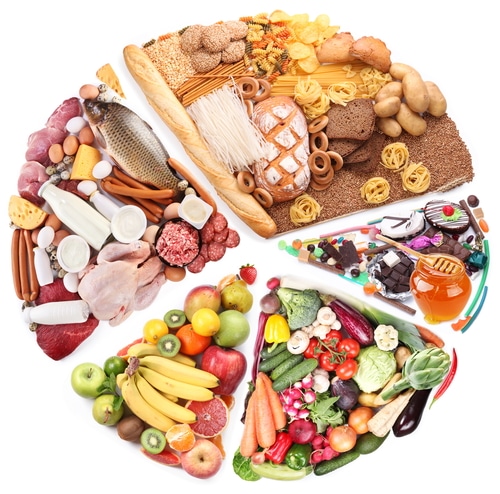
Metabolism and the Thermic Effect of Food
There’s another component of metabolism that you can subtly impact by lifestyle and dietary choices and that’s the “thermal effect of food.” Your metabolism can be broken down into three sub-components.
First, there’s your resting metabolic rate. Your resting metabolic rate makes up the majority of the energy you burn over a 24-hour period. It accounts for between 60 and 75% of your metabolic rate. Resting metabolic rate varies based on genetics, thyroid hormones and how much fat-free mass you have, meaning the amount of muscle you carry on your frame. Building lean body mass through resistance training can increase your resting metabolic rate.
Then there’s the thermic effect of exercise. This includes exercise you do in your daily workouts, at home as you move around the house and at work. It accounts for between 15 and 30% of your overall energy expenditure.
Finally, there’s the thermic effect of food. This refers to the energy expended to digest, absorb and use the macronutrients you take in through diet. Yes, digestion and absorption takes work and it takes a certain amount of energy to get food components from your intestines into cells where they can be used. This accounts for about 10% of your metabolic rate.
Factors that Increase the Thermal Effect of Food
It’s nice to know that eating a meal boosts your metabolism, and the amount of extra energy you burn with a meal or snack is influenced by what you eat and how often you eat it. Changing the composition of your diet and when you eat can subtly impact how many energy your body has to expend to get those nutrients digested, absorbed and into cells.
Let’s start with the composition of what you eat. Your body doesn’t have to expend much energy to break down and process fat, usually less than 5% of the calorie content of what you’re eating. Carbohydrates aren’t much better. Your body burns between 5 and 15% of the calories you consume in the form of carbohydrates to break them down. Protein is a different story. Your body has to work harder to break down and assimilate protein. It uses between 20 and 35% of the protein calories you take in just to digest, absorb and process protein.
To put this in perspective, if you eat a 300 calorie protein snack, you expend 60 to 105 calories to get it to a form your body can use. Contrast that with carbohydrates, where you’re only burning 15 to 45 calories. That’s a significant difference. So eating a diet that’s higher in protein gives you some metabolic advantage that can work in your favor when you’re trying to control your weight.
Other Factors That Impact the Thermic Effect of Food
You might think eating more frequently would boost the thermic effect of food, but research shows energy expenditure is greater when you eat a meal at one sitting rather than spacing the same number of calories out over several smaller meals. On the other hand, this doesn’t take hunger into account. You may ultimately be less hungry and consume fewer calories overall on the day if you eat smaller portions throughout the day.
Taking a brisk walk after a meal increases the thermic effect of food and boosts insulin sensitivity. Plus, it burns calories too. So, it’s better to move around after a meal than it is to collapse in a chair. Keep that in mind when you’re tempted to nap after eating a large meal.
Adding hot spices like chili pepper to your food also boosts the thermic effect of food. Although this effect is small, doing it consistently could have some impact on weight. There’s also some evidence that medium-chain triglycerides from sources like coconut oil boost the thermic effect of food because they’re rapidly oxidized by the liver and used for energy. They also appear to be more satiating than longer chain triglycerides.
One factor you have less control over is genetics. Naturally lean people tend to have a higher thermic effect of food than people who are overweight or obese. Losing body fat and increasing lean muscle mass helps to boost the thermic effect of food.
The Bottom Line?
The thermic effect of food makes up 10% or less of your total metabolic rate, but there are ways to subtly increase it. The best way is to eat more lean protein and take a brisk walk after a meal. If you enjoy hot, spicy foods, they also give your metabolism a short-term boost.
References:
J. Clin. Nutr. 1991: Nov. 84(5). 783-7.
J. Nutr. March 1, 2002 vol. 132 no. 3 329-332.
Exercise Physiology: Energy, Nutrition and Human Performance. Fifth edition. McArdle, Katch, and Katch. 2001.
J. Nutr. March 1, 2002 vol. 132 no. 3 329-332

